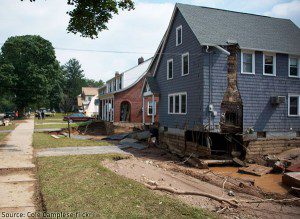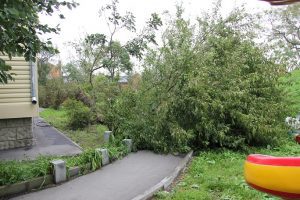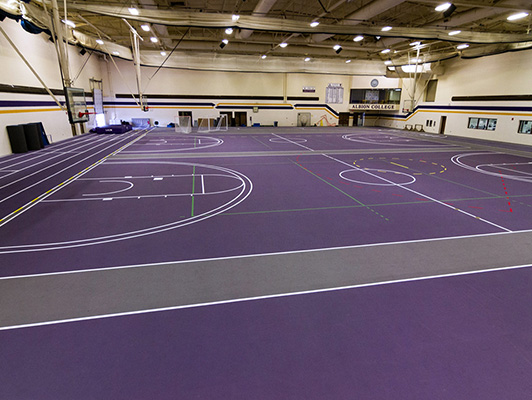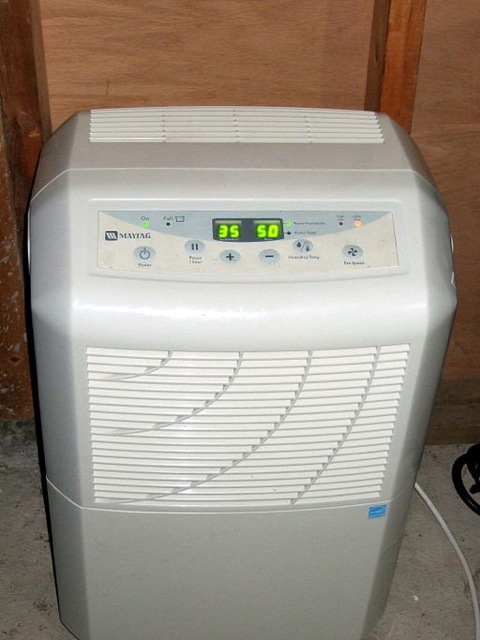How to Prepare for a Wind Storm
Summer weather means more than just sunshine; thunderstorms move in quickly and bring storm damage just as fast. Even a wind storm can have disastrous effects on your property. That’s why it’s important to make a plan in advance to limit storm damage. Follow these tips so you know what to do before, during, and after a wind storm.
What To Do In Advance
- Make a plan. Wind damage comes from a variety of storms and each has its own ways to prepare. Evacuations are often recommended in advance of hurricanes, but it’s safer to shelter in place during tornadoes because they come and go too quickly. Be sure that everyone in your home or business knows what to do in case of the most likely storms for your area. If you operate a store, restaurant, or other business that deals with many members of the public at once, be sure your staff knows how to escort them to shelter.
- Stock up on emergency supplies. Be sure the first aid kit is stocked and the flashlights have working batteries. A generator can power a house and costs a few hundred dollars; in an area that sees frequent hurricanes, it may be well worth the money. Solar panels that can charge cell phones are available online for under $50.
- Know how to turn off utilities or override electronics. Depending on any wind or flood damage, you may need to turn off the water or circuit box. If the power goes out, cars will be stuck inside a garage with an electric opener unless you know how to use the manual override.
- Give the roof a checkup. Be sure there aren’t any loose or missing shingles that could blow away during a storm or let in rain. It’s better to make repairs during good weather than to try to get a tarp over a hole in the roof during a thunderstorm.
- Check the perimeter. When you know a storm is on the way, do a quick check outside if there’s enough time. Put lawn furniture in the shed, pick up toys, put cars and bicycles in the garage, and fasten loose items, like patio umbrellas. Not only will these items blow away in a storm, but they can cause a great deal of damage in the process. A lawn chair can shatter a window, while a bike can put a huge dent in a car. Be sure to close any awnings too; even a mild wind storm can tear fabric from the frame.
- Back up your computers frequently. If your electronics suffer flood damage or any kind of storm damage, you’ll be glad you took the time to back up your files. Cloud backup services are available for free from Dropbox, Google, and other providers for a set amount of data and extra amounts of storage can be purchased for a nominal fee. The advantage of a cloud backup service is that you can access them from anywhere; if your home or business is damaged, you can use a computer or smart device anywhere that has internet access.
- Be sure you have a weather app on your smartphone and enable severe weather alerts. You won’t be near a TV or computer for every storm, so you need a way to check on the severity of storms and know when to take cover.
What To Do During A Storm
- Stay where you are! Don’t drive on flooded roads; water can be deceptively deep and it doesn’t take much water to sweep cars off the road. First responders have enough on their hands managing calls related to downed power lines, tree limbs, and other weather-related incidents. Go to a lower, interior level of your home or business and stay away from windows. Wait until the storm has passed and authorities have given the “all clear” to venture out.
- Turn on a local TV station or check the local weather on your computer or smart device. If you don’t already have a weather app, download one in case the power goes out.
- If you’re driving, pull over and stay away from overpasses and trees, both of which can fall on your car. Ideally, stop at a business or truck stop and head inside.
What To Do After A Storm
- If the power is out, don’t open the freezer or refrigerator; both are insulated and the longer they stay closed, the longer cold air stays trapped inside. Ideally, the electricity will return before things turn mushy.
- Check the building and outside for damage. Be careful walking around; there may be broken glass or tree limbs on the ground. Check in with neighbors, especially anyone who is elderly or ill.
- If you smell gas or hear a hissing sound, open the windows, turn off the gas, leave the building, and call the gas company immediately. Don’t use any open flames or electric switches indoors until the utility company says it’s ok.
- Contact your homeowner’s or renter’s insurance company if you have damage to your home and/or contents.
Storm and Wind Damage Restoration

Emergency times call for emergency measures.
If you experience flood damage for any reason at your home in Houston, TX, call the professionals at RestorationMaster. We offer 24-hour emergency service because floods don’t keep business hours. Our highly trained technicians provide emergency water removal, debris removal, mold remediationMold remediation is the process of identifying, removing, an... More, anti-microbial application and sanitation, restorationRestoration is the process of returning a property to its pr... More and temporary storage of damaged belongings, and much more. We work with your insurance company to process your claim as quickly as possible, so you can get your life back in order. We offer free consultations to form the water remediation plan that works best for your unique situation.
Storm and wind damage restorationRestoration is the process of returning a property to its pr... More costs vary, depending on the extent of the damage. According to HomeAdvisor.com, the national average is $6,169.













